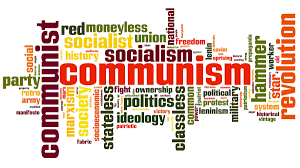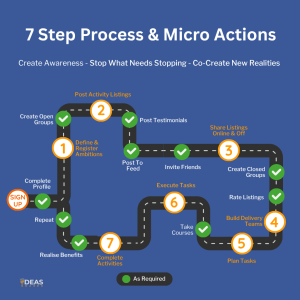The Clash of Ideologies in the 21st Century
Ambition & Activity Detail
Key Figures, Institutions, Popular Needs, and the Global Future
As societies fragment and power shifts globally, competing ideologies jostle for dominance in defining what the future looks like. But amid these vast narratives, ordinary people across the world consistently express a few fundamental desires:
>>> Freedom of speech and expression
>>> Better quality of life
>>> Less personal debt and financial strain
>>> Access to decent housing and income
>>> Affordable and effective healthcare
>>> Good education for all
>>> Decent jobs and fair wages
>>> A secure and optimistic economic future
So, which ideologies and their representatives are offering real solutions? And which ones risk entrenching systems that work for the few rather than the many?
1. Liberal Democracy: Reform or Decline?
Key Figures: Keir Starmer, Emmanuel Macron, Joe Biden, Justin Trudeau, Ursula von der Leyen, Mark Carney, Volodymyr Zelenskyy, King Charles III
Institutions:
United Nations (UN) – Upholds democratic norms, human rights, and multilateral governance.
Core Values:
Civil liberties, rule of law, electoral accountability, a mixed economy with regulated capitalism, and welfare-state protections.
Track Record on Popular Needs:
>>> ✅ Freedom of speech: Strong, but challenged by online censorship and political polarization
>>> ✅ Healthcare: Mixed—strong public systems (e.g. NHS) in some states, private-heavy in others
>>> ⚠️ Economic outlook: Unequal—growing income disparities despite stable systems
>>> ⚠️ Debt & jobs: Student and household debt persist; middle-class job security is under strain
>>> ✅ Education: Generally good access, though affordability varies
>>> ⚠️ Access to money: Financial system favours those with capital
Trajectory:
Struggling to meet 21st-century economic and ecological challenges without compromising democratic integrity. Reform is possible, but requires strong leadership and public engagement.
2. Authoritarian Capitalism: Efficiency Over Freedom?
Key Figures:
Xi Jinping, Vladimir Putin, Recep Tayyip Erdoğan, Mohammed bin Salman
Core Values:
State control over political systems, combined with capitalism and heavy investment in infrastructure, defence, and technology.
Track Record on Popular Needs:
>>> ❌ Freedom of speech: Suppressed
>>> ✅ Quality of life: Improving in infrastructure and tech access, especially in urban areas
>>> ⚠️ Debt: Public debt low, but private leverage high in some countries (e.g., China)
>>> ✅ Jobs: State-led economies deliver industrial and tech jobs efficiently
>>> ⚠️ Healthcare/Education: Improving but uneven; access often tied to political compliance
>>> ❌ Access to money: Concentrated; limited financial inclusion for dissenting voices
Trajectory:
Rising globally. Many developing countries are emulating this model for its perceived stability and growth. But democratic freedoms and human rights are often casualties.
3. Techno-Utopianism and Silicon Valley Libertarianism
Key Figures:
Elon Musk, Peter Thiel, Sam Altman, Marc Andreessen
Institutions:
World Economic Forum (WEF) – Platform where elite tech and political leaders promote global innovation, "stakeholder capitalism," and AI governance.
Core Values:
Decentralization, rapid innovation, borderless digital economies, minimal government interference, and post-national identity.
Track Record on Popular Needs:
>>> ⚠️ Freedom of speech: Champions openness, but platforms often manipulate discourse
>>> ⚠️ Quality of life: Uneven—some gains (telehealth, e-learning), others commodified
>>> ❌ Access to money: Wealth highly concentrated; crypto promised freedom but is volatile
>>> ❌ Jobs: Automation threatens traditional work; gig economy is precarious
>>> ⚠️ Healthcare/Education: Tech-enhanced but often private and expensive
>>> ⚠️ Economic outlook: Promising for tech-savvy elites; bleak for others
Trajectory:
Powerful in shaping the future, but often alienated from democratic accountability. WEF promotes high-tech solutions, but critics argue it sidelines public agency and fosters “elite managerialism.”
4. Eco-Socialism and Degrowth
Key Figures:
Greta Thunberg, Naomi Klein, Andreas Malm, Pope Francis, King Charles III (symbolic)
Core Values:
Environmental justice, economic equality, climate responsibility, and reduced consumption to protect the planet.
Track Record on Popular Needs:
>>> ✅ Healthcare: Advocates for universal, sustainable models
>>> ✅ Education: Seeks equal, publicly funded access
>>> ✅ Quality of life: Holistic and community-oriented
>>> ⚠️ Jobs: Push for green jobs, but transition risks economic disruption
>>> ❌ Access to money: De-emphasizes wealth growth in favour of sustainability
>>> ✅ Economic outlook: Long-term stability > short-term profits
>>> ✅ Freedom of speech: Strongly supports pluralism and civil liberties
Trajectory:
Rising especially among youth and climate-affected communities. But lacks institutional power, and transition demands systemic overhaul and broad political will.
5. Religious Fundamentalism and Theocratic Rule
Key Figures:
Ali Khamenei, Narendra Modi, Taliban leaders, Yogi Adityanath
Core Values:
Governance by divine law, cultural conservatism, and moral discipline.
Track Record on Popular Needs:
>>> ❌ Freedom of speech: Severely limited
>>> ⚠️ Quality of life: Depends on conformity; harsh penalties for dissent
>>> ❌ Education/health: Access shaped by ideology, especially for women and minorities
>>> ❌ Economic freedom: Subservient to religious rules or majoritarian politics
>>> ✅ Jobs (short-term): In some cases, religious states stabilize local economies
Trajectory:
Expanding in crisis-prone or identity-fractured regions. Offers community and belonging but often suppresses personal freedoms and pluralism.
6. Post-Liberal Nationalism and Populism
Key Figures:
Nigel Farage, Kemi Badenoch, Donald Trump, Viktor Orbán, Javier Milei, Giorgia Meloni
Core Values:
Sovereignty, national identity, anti-globalism, and suspicion of elites
Track Record on Popular Needs:
>>> ✅ Freedom of speech: Often emphasized—but selectively protected
>>> ⚠️ Healthcare/Education: Promised but often underfunded or privatized
>>> ⚠️ Jobs: Pro-worker rhetoric, but mixed delivery
>>> ❌ Debt & access to money: Little structural reform for financial inequality
>>> ⚠️ Economic outlook: Optimistic framing, weak follow-through
>>> ❌ Pluralism: Marginalizes minorities, migrants, and dissidents
Trajectory:
Emotionally resonant, especially in “left-behind” communities. But it often fails to deliver sustained material improvement once in power.
Overlay Summary: Who Best Serves Ordinary People?
Ideology | Speech | Healthcare | Education | Jobs | Debt Relief | Quality of Life | Economic Future | Access to Money |
|---|---|---|---|---|---|---|---|---|
Liberal Democracy | ✅ | ⚠️ | ✅ | ⚠️ | ❌ | ⚠️ | ⚠️ | ⚠️ |
Authoritarian Capitalism | ❌ | ⚠️ | ⚠️ | ✅ | ⚠️ | ✅ | ✅ | ❌ |
Techno-Utopianism | ⚠️ | ⚠️ | ⚠️ | ❌ | ❌ | ⚠️ | ⚠️ | ❌ |
Eco-Socialism | ✅ | ✅ | ✅ | ⚠️ | ✅ | ✅ | ✅ | ⚠️ |
Religious Fundamentalism | ❌ | ❌ | ❌ | ⚠️ | ❌ | ⚠️ | ⚠️ | ❌ |
Post-Liberal Populism | ⚠️ | ⚠️ | ⚠️ | ⚠️ | ❌ | ⚠️ | ⚠️ | ❌ |
Conclusion: Do We Have a Vote in the Future?
In theory, yes—ordinary people can still influence direction through democratic action, protest, technological experimentation, and collective mobilization. But in practice, most systems remain top-down, with institutions like the UN and WEF navigating from above and setting long-term agendas often disconnected from public consent.
The real challenge:
To reclaim agency, people must demand systems that combine:
>>> Democratic accountability
>>> Economic fairness
>>> Ecological sustainability
>>> Technological transparency
Otherwise, the 21st century may not be one we shape—it may be one we’re forced to endure.
Supporting Information
Location & Impact Details
Vote To Help Prioritise Activity Listing
You must be logged in to rate.
Contact Details
There are no reviews yet.



